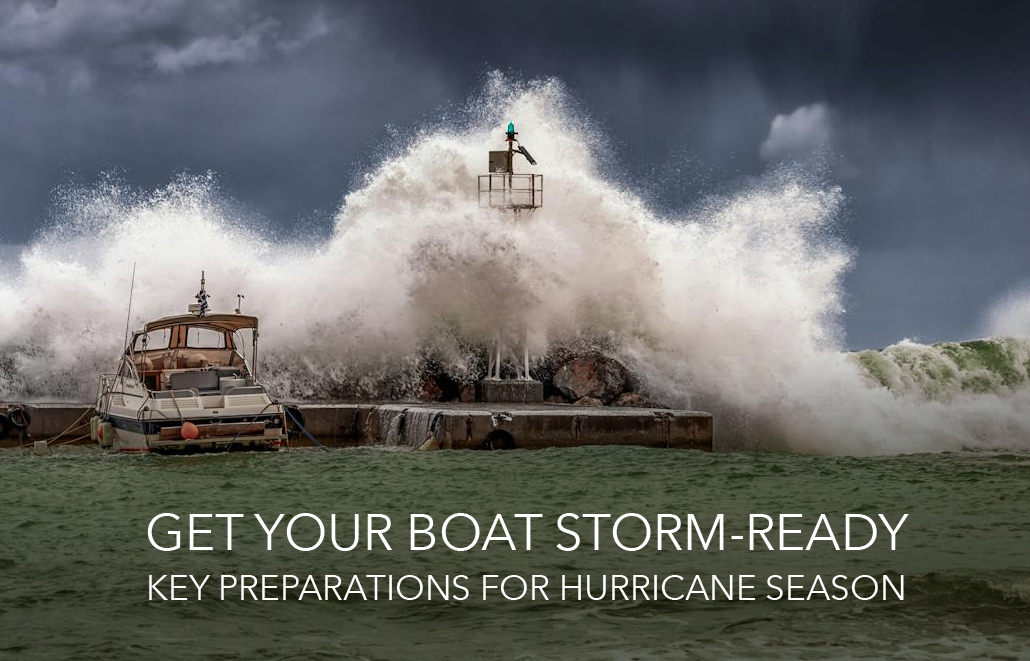The busiest time of the year for hurricanes in the US typically falls between August and October. This period is known as the peak of the Atlantic hurricane season. During these months, conditions such as warmer sea surface temperatures and favorable atmospheric conditions are most conducive to hurricane formation and intensification. While hurricanes can form outside of these months, the frequency and intensity generally increase during this peak period.
Preparing for Hurricane Season
Damage to boats during a hurricane can be extensive and varied, depending on the severity of the storm and the boat’s preparation. Preparing your boat for a hurricane involves several crucial steps to minimize damage and ensure its safety. Here’s a checklist to help you protect your vessel:
- SECURE A SAFE LOCATION
- Dock: If possible, move your boat to a well-protected dock or marina that has strong hurricane ties and can handle high winds.
- Land: If you have the option, haul your boat out of the water and store it on land, preferably in a hurricane-rated storage facility.
- REMOVE ALL GEAR Take off any removable items like sails, fishing gear, and electronics. Store them in a secure location.
- PROTECT THE HULL
- Clean and Inspect: Make sure the hull is clean and check for any potential weaknesses or damages.
- Fenders and Lines: Add extra fenders and secure lines to prevent the boat from banging against the dock or other boats. Use chafing gear to protect lines from wear and tear.
- SEAL OPENINGS
- Windows and Hatches: Close and seal all windows, hatches, and other openings to prevent water from entering the boat.
- Pumps: Ensure all bilge pumps are working properly and consider adding a manual pump as a backup.
- SECURE THE BOAT
- Mooring Lines: Use heavy-duty mooring lines and consider doubling up on lines. Tie the boat to both the dock and secure points on the boat.
- Tying Down: If on land, use straps or chains to secure the boat to the trailer or storage location.
- CHECK ENGINE AND FUEL
- Draining: Drain fuel tanks if possible, or at least fill them to reduce the risk of water contamination.
- Battery: Disconnect the battery to prevent damage from flooding or short circuits.
- Emergency Supplies:
- Tools: Keep a toolkit onboard for any repairs that might be necessary.
- Safety Gear: Ensure you have life jackets, emergency flares, and a first-aid kit in case of unforeseen issues.
- Monitor Weather Updates: Stay informed about the storm’s progress and be ready to act if the situation changes.
Post-Hurricane Actions
- ACCESS DAMAGE
- Visual Inspection: Carefully inspect the boat for visible damage to the hull, rigging, and interior.
- Professional Assessment: Have a marine surveyor or technician assess any structural or mechanical issues.
- CLEAN AND REPAIR
- Clean Saltwater: Rinse off saltwater to prevent corrosion and damage.
- Repair Damage: Make necessary repairs to the hull, engine, and other components.
- DOCUMENT DAMAGE
- Insurance Claim: Take photos and document all damage for insurance purposes.
- PREVENT FUTURE DAMAGE
- Review and Improve: Review the damage and adjust your hurricane preparation and response plan for future storms.
Preparing your boat for a hurricane and conducting thorough post-storm inspections are critical steps in minimizing damage and ensuring the vessel’s safety and longevity.



